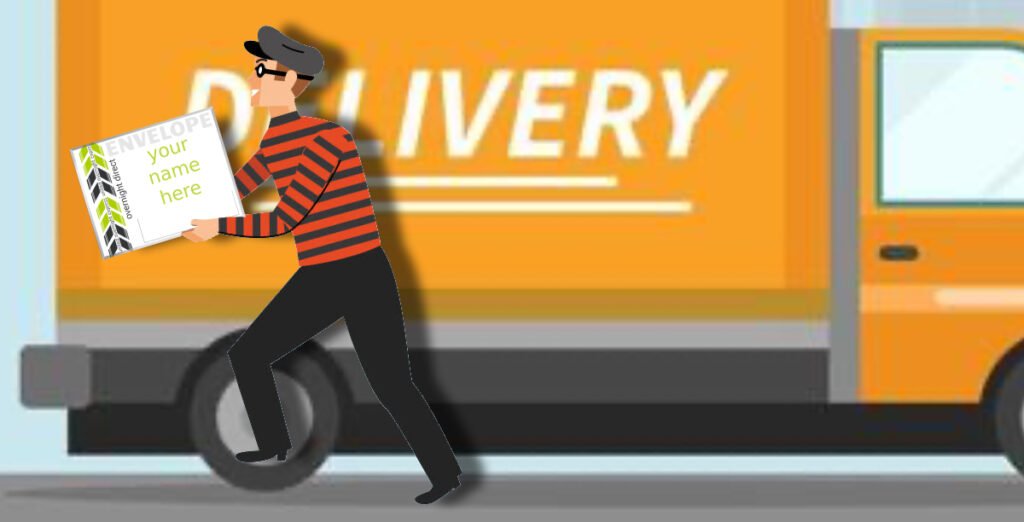High Value Shipping Insurance - A Deep Dive
High-Value Shipping Insurance:
Essential Protection for Priceless Shipments
High-value shipping insurance offers coverage that goes beyond standard carrier limits, addressing the specific risks involved in transporting valuable or irreplaceable items. This type of insurance ensures that your assets are safeguarded against potential loss or damage during transit.
Why Is High-Value Shipping Insurance Important?
-
Financial Protection: High-value items—such as financial instruments, electronics, fine art, or jewelry—are more vulnerable to theft, loss, or damage. Insurance minimizes the financial impact if something goes wrong.
-
Peace of Mind: Knowing your shipment is fully insured allows you to focus on other priorities, whether personal or professional.
-
Full Value Compensation: Unlike basic carrier coverage, specialized policies can reimburse you for the full value of your shipment, offering true financial security in the event of a claim.
What Qualifies as a High-Value Item?
-
Fine jewelry, gemstones, pearls, and precious metals
-
Electronics including computers, servers, and mobile devices
-
Artwork, antiques, and collectibles
-
High-end equipment and industrial machinery
-
Designer clothing, handbags, footwear, and furs
-
Medical devices and pharmaceuticals
-
Rare coins and stamp collections
-
Musical instruments
Key Benefits of High-Value Shipping Insurance
-
Comprehensive Coverage: Protection from loss, damage, theft, and even natural disasters.
-
Advanced Security Measures: Many providers offer enhanced services such as white-glove handling, tamper-evident seals, and real-time tracking to mitigate risks.
-
Streamlined Claims Process: A simplified claims experience ensures quicker resolution and compensation.
-
Customized Policies: Tailor your coverage to match the specific value and risk level of your shipment.
How to Get High-Value Shipping Insurance
-
Choose a Trusted Shipping Partner: Work with experienced providers who specialize in high-value logistics.
-
Assess the Value: Secure an up-to-date appraisal or market valuation to determine appropriate coverage.
-
Ensure Secure Packaging: Use high-quality packing materials and tamper-evident seals to protect your items.
-
Document the Condition: Take photos and maintain detailed records of your items before shipping.
-
Explore Third-Party Insurance Options: If carrier coverage is limited, consider purchasing additional insurance from a specialized provider.
Additional Services Your Carrier Should Offer to Enhance Protection
-
Real-Time Tracking: Your carrier should have online tracking to help you stay informed with updates on your shipment’s location throughout the journey.
-
Secure Packaging Solutions: Demand your courier use custom lockboxes or specialty packaging for added peace of mind, especially with smaller items.
- Added Security Shipper: Choose a courier that includes added security features to get your package to you safely.
By securing Southern Fidelty high-value shipping insurance, you can rest assured that your most valuable items are protected—giving you confidence and clarity throughout the shipping process.

Necessary Component of High Value Insurance
High value shipping insurance protects your precious shipment against severe loss or damage to your property during transit, similar to car and homeowner insurance. It covers various modes of transport and protects against perils like theft, natural disasters, and damage.
- High Value shipping insurance is essential for safeguarding imense financial interests during transit.
- It covers what other companies refuse when you expericence physical loss or damage of your precious merchandise from external causes while goods are en route.
- We cover all modes of transit: air, ocean, truck, and train.
- Common perils covered include theft, fire, and natural disasters.


High Value Insurance as a Recovery Remedy
Cargo insurance has been a vital tool for cargo owners since ancient times, providing a way to mitigate risks associated with losses during transit. It remains crucial for limiting uncertain outcomes when losses occur.
- Cargo insurance has historical roots dating back to ancient Greece and Rome.
- It serves as a remedy for cargo owners to limit financial losses.
Carriers are often not liable for unforeseeable losses beyond their control

Carrier Liability Limitations Explained
Carriers have limited monetary liability for shipment losses, dictated by contractual terms and international treaties. Cargo insurance is necessary to fully protect the financial interests of cargo owners, especially in high value situations.
- Carrier liability is restricted by the Bill of Lading and other contractual terms.
- The burden of proof typically lies with the receiver/ owner in loss claims.
- Cargo insurance is recommended for every shipment at risk, especially in high value cases.

Declared Value vs. Cargo Insurance
Declared value increases the recovery amount from carriers in case of negligence but is not the same as cargo insurance, which provides broader coverage. Cargo insurance offers comprehensive protection beyond what declared value can provide.
- Declared value is often confused with cargo insurance but is not equivalent.
- Cargo insurance provides door-to-door coverage and pays regardless of carrier negligence.
- Declared value does not cover losses outside the carrier’s control.

Types of Cargo Insurance Coverage
Cargo insurance policies typically offer two main types of coverage: All-Risk and Free from Particular Average (FPA). All-Risk coverage is the most common and provides the broadest protection.
- All-Risk coverage responds to all physical losses except those specifically excluded.
- FPA coverage only covers perils listed in the policy for partial losses.
- All-Risk is preferred for comprehensive protection against various risks.

Common Exclusions in Cargo Insurance
While cargo insurance aims to cover physical loss or damage, it does not cover financial losses due to delays or other non-physical issues. Certain exclusions are standard in cargo policies.
- Common exclusions include improper packing, abandonment, and losses due to strikes.
- Financial losses from market loss or delays are not covered.
- Specific perils like acts of war may require separate endorsements for coverage.

Duration of Coverage in Cargo Insurance
Cargo insurance coverage has defined start and end points, typically covering goods while in transit. Warehouse-to-warehouse coverage is common but may require notification for extensions.
- Coverage begins when goods leave the warehouse and ends upon delivery.
- Deviations from normal transit must be approved by underwriters.
- Coverage can be extended for goods in storage with prior notification.

Geographic and Monetary Limits of Coverage
Cargo insurance policies specify geographic limits where coverage applies and monetary limits on claims. It is crucial for cargo owners to ensure their shipments fall within these limits.
- Geographic limits may exclude certain countries or routes.
- Monetary limits determine the maximum payout for covered losses.
- Underinsurance can leave cargo owners exposed in the event of a claim.

Importance of Correctly Insuring Shipments
Underinsuring shipments can lead to significant financial losses, as claims may only cover a portion of the actual value. It is critical to insure shipments at their correct value to avoid coinsurance penalties.
- Underinsurance can result in reduced claim payouts, leading to unhappy cargo owners.
- Coinsurance penalties apply when shipments are insured for less than their actual value.
- Accurate valuation is essential to ensure full coverage in case of loss.

Claims Process and Documentation Requirements
In the event of a claim, specific documentation is required to support the claim and facilitate the process. Cargo owners must take immediate action to protect their interests.
- Required documents include proof of insurance, commercial invoices, and bills of lading.
- Cargo owners should notify all carriers involved in the shipment of the claim.
- Timely documentation and communication are crucial for successful claims resolution.
A SIMPLIFIED PROCESS. TO GET YOU MOVING FAST
01
VERIFICATION
CALL ONE OF OUR SPECIALISTS AND INFORM US WHAT YOU ARE SHIPPING OR RECEIVING SO WE CAN RESEARCH AND VERIFY THE VALUE OF CONTENTS.
02
QUOTE
ANSWER A FEW SIMPLE QUESTIONS USING OUR EASYH INTERVIEW PROCESS SO WE CAN NEGOTIATE HE BEST RATE ON YOUR BEHALF.
03
COMPARE
WE RECEIVE PROPOSALS FROM DIFFERENT UNDERWRITING INSURANCE COMPANIES AND INFORM YOU OF THE BEST COVERAGE AT THE LOWEST RATE.
04
BIND
ENJOY PIECE OF MIND KNOWING THAT YOU HAVE THE RIGHT INSURANCE COVERAGE TO COMPLY WITH REGULATIONS AND FIT YOUR NEEDS.
